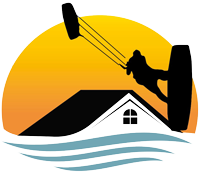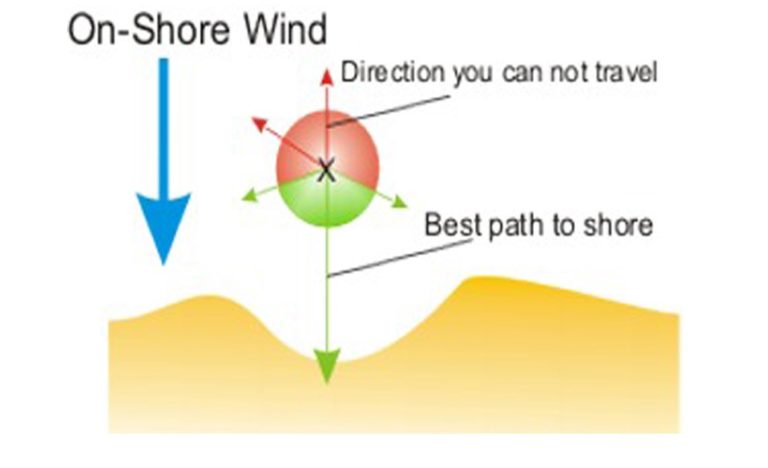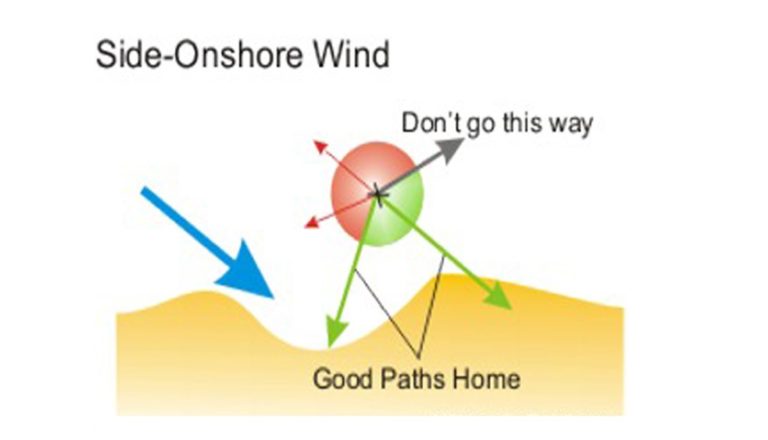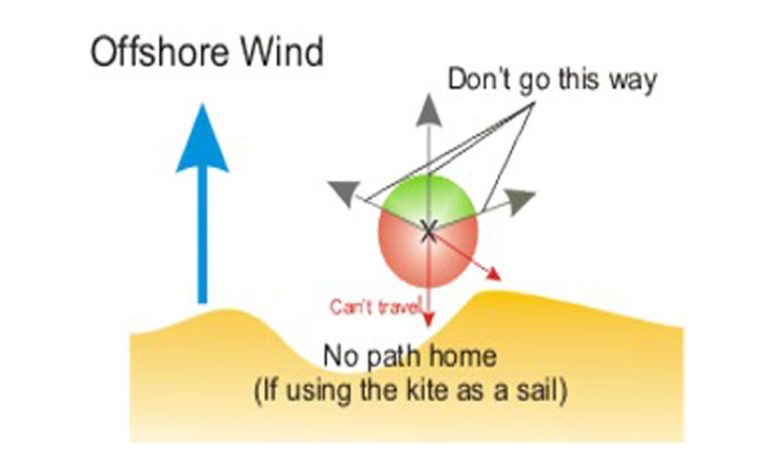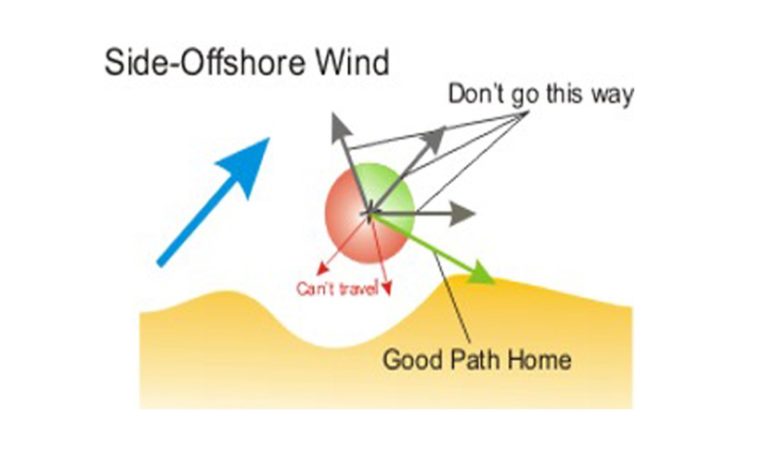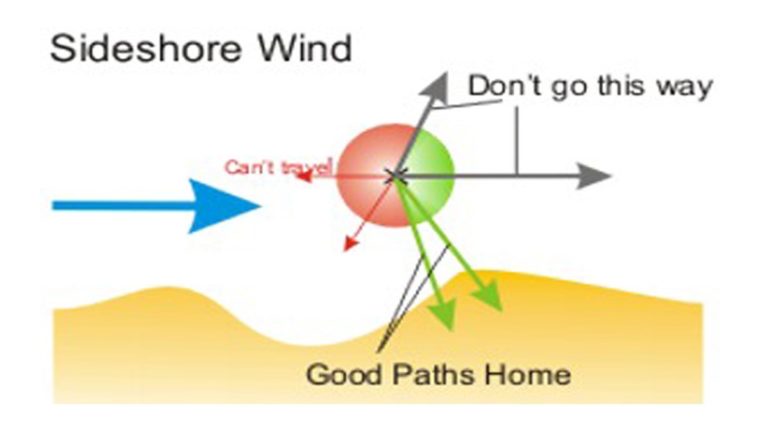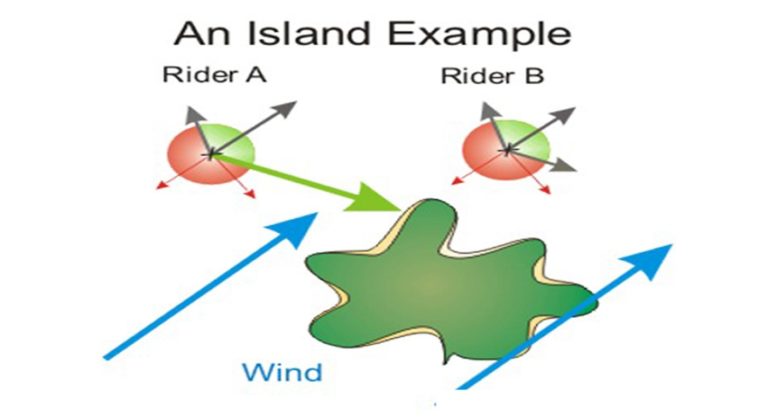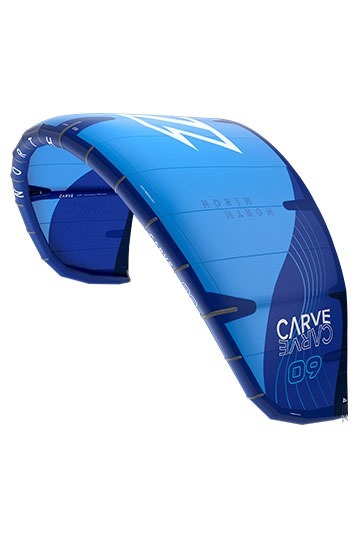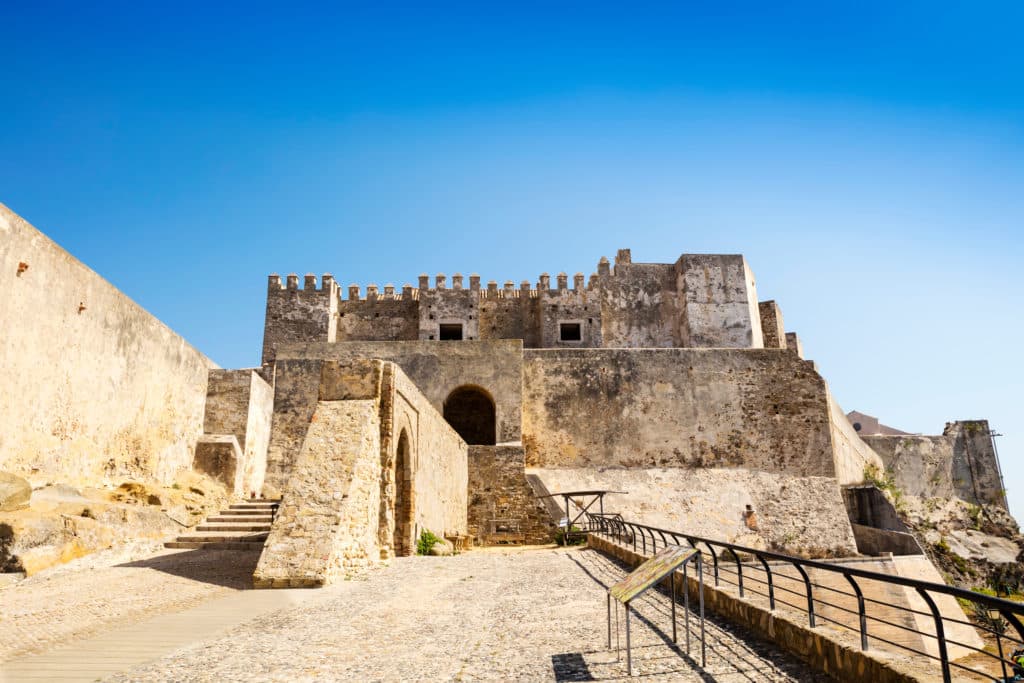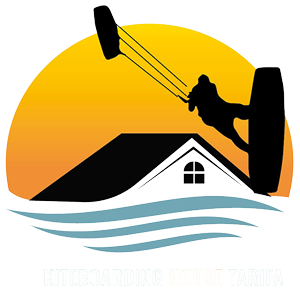The conditions you ride in determine whether or not you make it back to shore…
A rule of kiteboarding is to always have a way home – you never go out unless you’re guaranteed
to come back. The good thing is that we can use the self rescue to bring us back to shore in an emergency.
The bad thing is that it does not work in all situations. Depending on the wind direction, we may or may not be able to come home. The diagrams below will show which winds we can come home in, and which ones we can’t.
• Onshore Winds
• Side-Onshore Wind
• Offshore Wind
• Side-Offshore Wind
• Sideshore Wind
• Island Winds
Onshore Wind
While onshore winds are not the best to ride in (you can be lofted and blown inland), they are the easiest to get home in. Unless you are in a current, you will naturally drift towards shore. If you use your kite as a sail, then your return to shore is guaranteed! Good wind direction only for those who can ride upwind.
Offshore Wind
This wind direction is the worst to ride in. There are too many ways to be blown out to sea.
Even if you can ride upwind, you will not be able to use the self rescue to come home if your gear fails. Riding in offshore winds is a very bad idea unless you have a rescue boat, ride on a lake, or have some other guaranteed way of coming home.
Side-Offshore Wind
This is an easy wind to ride in, but it does not leave you with a lot of options if you need to self rescue. As you can see in the diagram, a rider in this situation only has one way to come home.
It will be harder for this rider to return to shore if there is a current or the beach is very short. If this rider was on an island, he could find himself in serious trouble
Sideshore Wind
Another great type of wind to ride in, sideshore winds are the best overall. They provide you with endless ways to kite across the wind and downwind.
If your equipment fails , you will easily be able to use the self rescue to come home.
Island Winds
Islands are great because it doesn’t matter what direction the wind is blowing in. In any wind , an island will have onshore , sideshore, and offshore winds
This can be great because you will always have good wind direction for kiting, but be careful – there will always be a bad wind direction too!
In the picture below, you can see that rider A can use the self rescue to get home if she needs to. However, rider B has gone too far downwind and can’t come back by the same method .
Always be aware where you are and how you can get home if you are riding in this situation.
